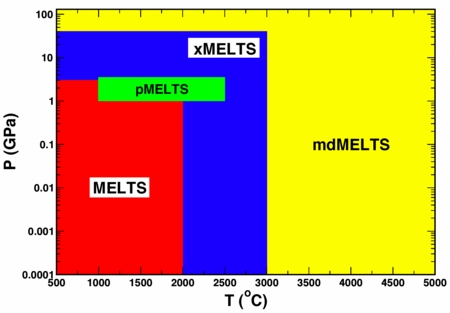Unlike Athena, MELTS,89/= rhyolite-MELTS and pMELTS did not suddenly emerge — fully formed — from the forehead of Zeus. When you use results from MELTS, rhyolite-MELTS or pMELTS in a publication, abstract or talk, please cite the appropriate reference(s).
Calculations derived from MELTS should be cited as:
Ghiorso, Mark S., and Sack, Richard O. (1995) Chemical Mass Transfer in Magmatic Processes. IV. A Revised and Internally Consistent Thermodynamic Model for the Interpolation and Extrapolation of Liquid-Solid Equilibria in Magmatic Systems at Elevated Temperatures and Pressures. Contributions to Mineralogy and Petrology, 119, 197-212
Asimow PD, Ghiorso MS (1998) Algorithmic Modifications Extending MELTS to Calculate Subsolidus Phase Relations. American Mineralogist 83, 1127-1131
Calculations derived from pMELTS should be cited as:
Ghiorso, Mark S., Hirschmann, Marc M., Reiners, Peter W., and Kress, Victor C. III (2002) The pMELTS: An revision of MELTS aimed at improving calculation of phase relations and major element partitioning involved in partial melting of the mantle at pressures up to 3 GPa. Geochemistry, Geophysics, Geosystems 3(5), 10.1029/2001GC000217
Calculations derived from rhyolite-MELTS should be cited as:
Gualda G.A.R., Ghiorso M.S., Lemons R.V., Carley T.L. (2012) Rhyolite-MELTS: A modified calibration of MELTS optimized for silica-rich, fluid-bearing magmatic systems. Journal of Petrology, 53, 875-890.
Ghiorso M.S., Gualda, G.A.R., (2015) An H2O-CO2 mixed fluid saturation model compatible with rhyolite-MELTS. Contributions to Mineralogy and Petrology 2015, in press
